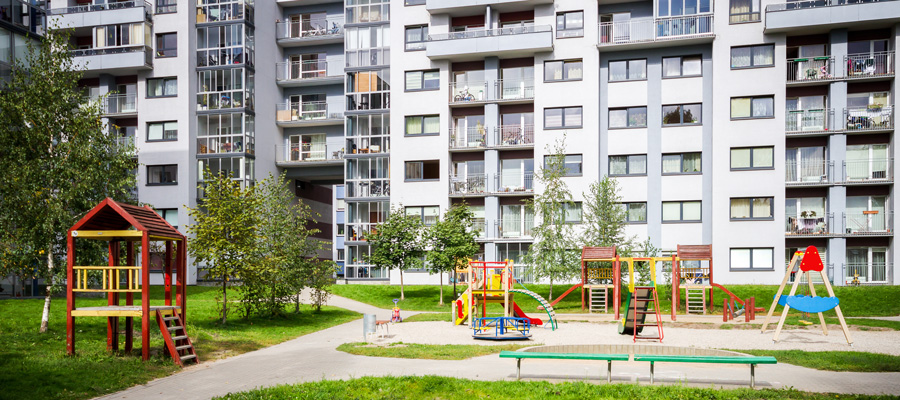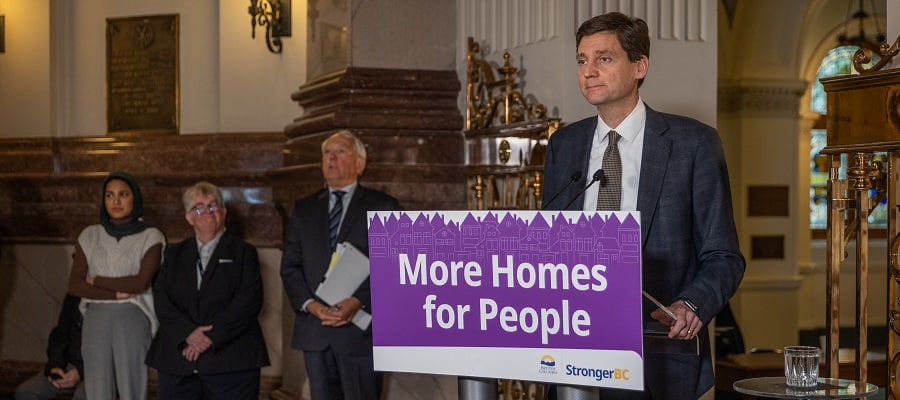Provincial zoning reform essential to reduce housing exclusion and displacement

Sky-high rents, ultra-low vacancy rates and fierce competition for scarce homes have become the grim but familiar picture of housing in BC, driving unaffordability, exclusion and displacement.
The BC government has made major housing policy announcements in recent weeks and a key focus has been tackling chronic municipal roadblocks to new housing.
For decades, exclusionary zoning has effectively banned new apartments on the vast majority of residential land in our cities, reserving it for the lowest density housing like detached homes.
These entrenched municipal policies drive up the price of the scarce parcels of land where multifamily housing is allowed, making new homes more difficult and expensive to build for public, non-profit and private developers alike. Even where apartments are allowed, each new building has to go through an arduous, multi-year rezoning process.
The result is a severe housing shortage. To catch up, the Canada Mortgage and Housing Corporation estimates that BC needs to build 610,000 more homes by 2030 above current trends, consistent with the findings of independent analysts.
A key focus has been tackling chronic municipal roadblocks to new housing.
Two new provincial laws seek to address the zoning problem. First, the BC government is stepping in to require that cities allow multiplexes of three to four homes in zones that now only allow single-family houses or duplexes.
Some mayors complain this is a “one-size-fits-all” approach, but that better describes the status quo of exclusionary zoning they have long imposed.
Detached houses will still be allowed under the new policy—they’ll just no longer be the only thing allowed. Independent analysts estimate this change alone could create 130,000 new homes in BC over 10 years.
With key details still to be announced, the bigger danger will be if the final policy doesn’t go far enough, like the City of Vancouver’s disappointing multiplex policy adopted earlier this year. That policy severely restricts the total housing floor space allowed for multiplexes, undermining the viability of many potential projects. As a result the city expects only about 150 multiplexes to be built each year—a fraction of what’s needed.
The province should require cities to allow a significant increase in floor space in line with successful upzoning in Auckland and recent reforms in Spokane.
A second provincial law will allow more apartments near rapid transit stations. Today several SkyTrain stations in Vancouver are still surrounded by detached houses due to zoning restrictions, which is absurd amid climate and housing crises.
Under the new standards, cities must allow apartment buildings of 20 storeys within 200 metres of rapid transit stations and eight storeys within 800 metres. The province has already been buying up land near stations to build its own affordable housing projects. Allowing apartments in the full 800-metre radius also means more renters can live on quiet side streets instead of noisy, polluted arterial roads where apartments are usually required to be built.
The bigger danger will be if the final policy doesn’t go far enough.
Opening up these single-family areas to apartments can also help reduce displacement. Under the status quo, with apartments blocked in detached housing zones, development is steered towards existing apartment areas, which leads to demolitions of older apartments. Burnaby notoriously saw mass evictions in this manner near Metrotown. Badly needed new apartments could have been built instead in nearby single-family areas if the city had allowed it.
Where there is going to be redevelopment of existing rentals, cities and the province should ensure strong tenant protections are in place that give renters the right to return to new buildings at existing rents. In addition to protecting those renters, this would effectively increase redevelopment costs proportionally to the number of existing renters (and inversely to their rent levels), further steering new apartments towards sites with single-family houses.
It’s clear that the province is no longer tinkering around the edges of the housing crisis. They’re bringing an end to some of the most egregious forms of exclusionary zoning.
Still, more needs to be done.
This includes massively increasing investment in non-market housing, enacting strong tenant protections, taxing land wealth, fixing housing supply act targets that are far too low and allowing low- and mid-rise apartments on far more single-family land including the wealthiest enclaves like Vancouver’s Shaughnessy and West Point Grey.
Topics: Housing & homelessness


